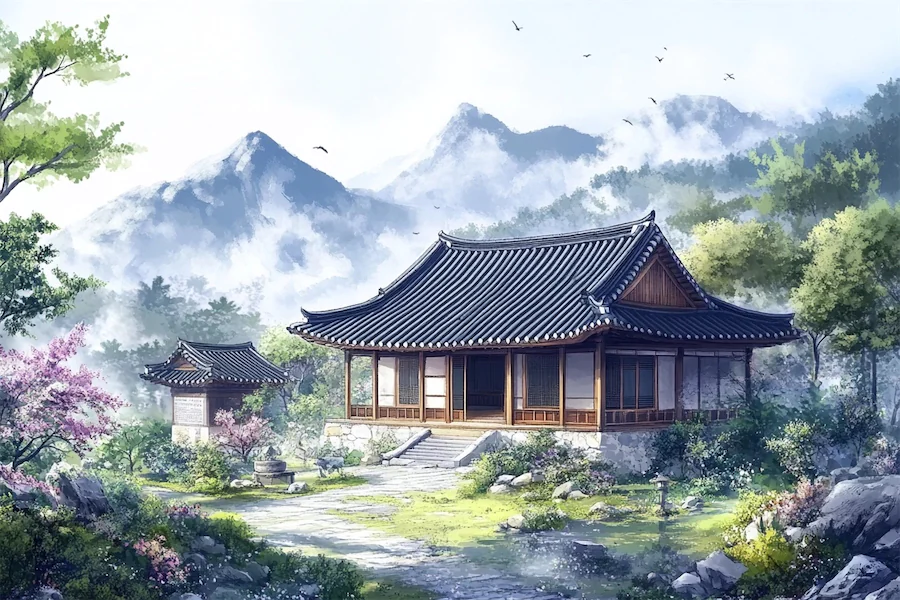Hanok (한옥) refers to traditional Korean houses that exemplify the nation’s architectural heritage, with their roofs being particularly distinctive and functional.
History and Origins of Hanok Roofs
The design of Hanok roofs has evolved over centuries, influenced by Korea’s diverse climates and social hierarchies. In the early periods, commoners typically resided in thatched-roof houses (choga), utilizing materials like rice straw, which provided effective insulation—cool in summer and warm in winter. However, these materials required frequent replacement due to their susceptibility to decay. In contrast, the upper classes, such as the yangban, lived in tiled-roof houses (giwajib), featuring durable ceramic tiles (giwa) that not only signified social status but also offered enhanced longevity and fire resistance.
Key Features of Hanok Roofs
Hanok roofs are renowned for their elegant curves and practical designs:
- Giwa (Roof Tiles): Made from fired clay, these tiles are typically dark gray but can also be found in other colors, such as the blue tiles of the Korean presidential residence, Cheongwadae. The tiles are arranged in an alternating pattern of concave and convex shapes, secured with a clay mixture known as hongdukkae, ensuring effective water drainage and structural stability.
- Cheoma (Eaves): The overhanging edges of the roof, known as cheoma, can be adjusted in length to control the amount of sunlight entering the house, thereby contributing to interior climate regulation.
- Curved Silhouette: The gracefully upturned corners of Hanok roofs are not merely aesthetic; they facilitate efficient rainwater runoff and enhance ventilation, reflecting a harmonious blend of form and function.
Applications of Hanok Roofs
Beyond their residential use, Hanok roofs are integral to various traditional Korean structures:
- Buddhist Temples: The expansive, ornate roofs of temples often feature intricate carvings and vibrant colors, embodying spiritual symbolism and architectural grandeur.
- Pavilions and Palaces: These structures showcase the versatility of Hanok roofing techniques, with designs ranging from simple, understated forms to elaborate, multi-tiered configurations, reflecting the building’s purpose and the status of its occupants.
Considerations When Choosing Hanok Roofs
When selecting or restoring a Hanok roof, several factors should be considered:
- Material Selection: Opting for authentic materials like traditional giwa tiles preserves historical integrity and ensures compatibility with existing structures.
- Climate Adaptation: The roof’s design should align with local climatic conditions; for instance, regions with heavy snowfall may require steeper pitches to prevent accumulation.
- Maintenance: While tiled roofs are durable, they necessitate periodic inspections and repairs to address potential issues such as tile displacement or damage, ensuring the structure’s longevity.
Conclusion
The roofs of Hanok are a testament to Korea’s rich architectural tradition, embodying a balance between aesthetic beauty and practical functionality. Their thoughtful design, rooted in centuries-old wisdom, continues to inspire and inform modern architectural practices, highlighting the enduring relevance of traditional building techniques.
